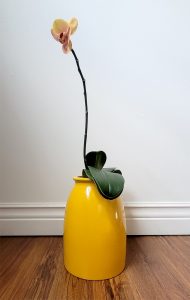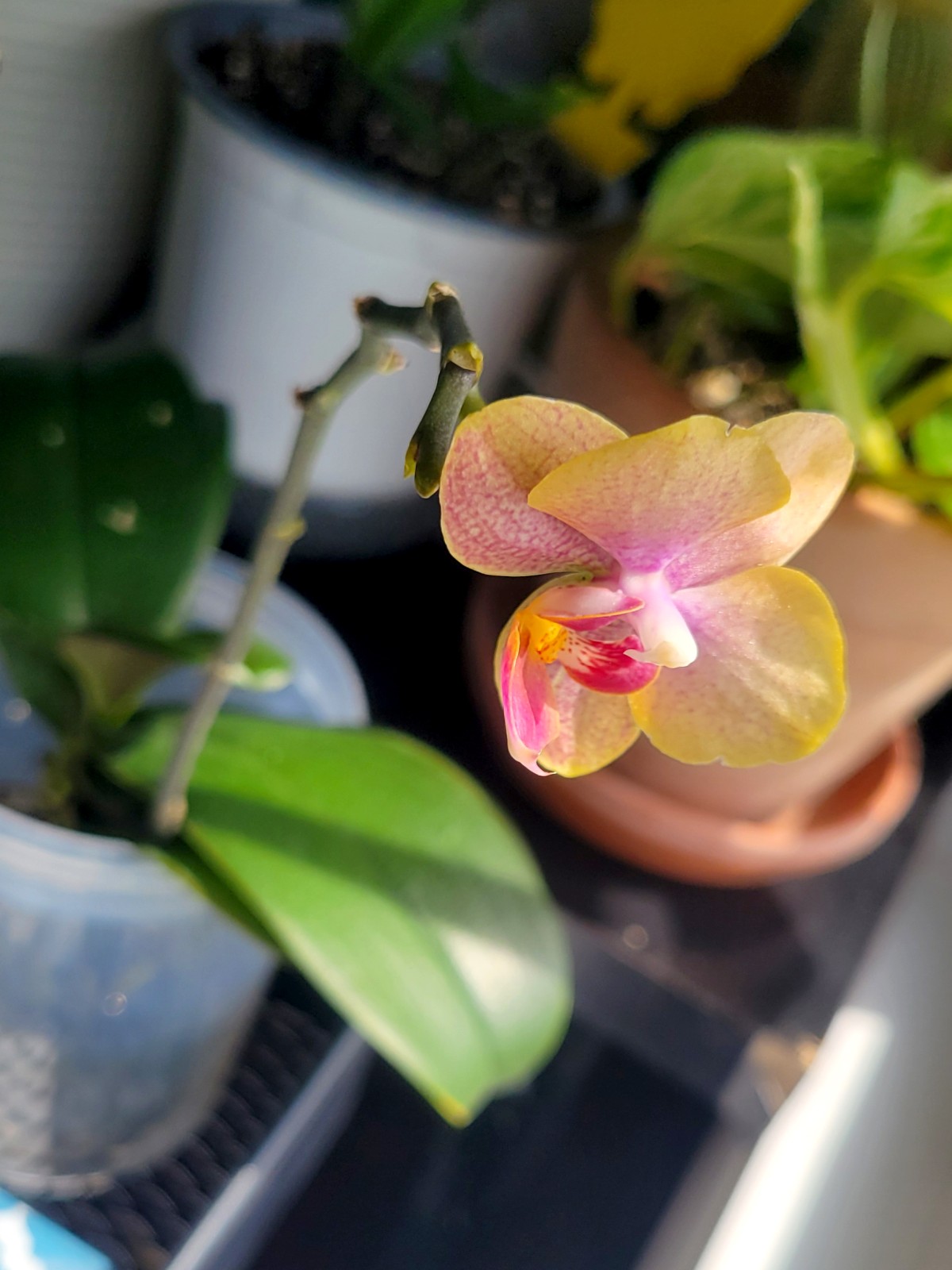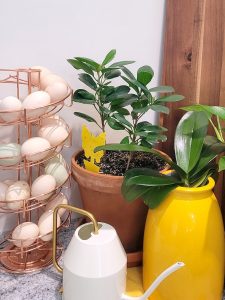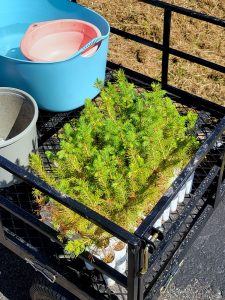Home Depot and Kent are two of my favorite places to browse for discount plants, especially when I’m in the mood to bring home a little green without spending much. In March 2024, I got lucky and found a blooming orchid tucked away in a quiet, low-traffic corner of the store—on sale for just $9. I had recently been thinking about growing orchids again, so I couldn’t resist the chance to give this one a second life.
It only had one small flower and looked a bit neglected—wilted or weakened in appearance. I could see why it was marked down, but there was still something beautiful and delicate about it. I decided to take a chance and bring it home.
This wasn’t my first orchid. Years ago, as a complete indoor plant beginner, I bought one without knowing how they grow. As soon as the flowers dropped, I assumed it had died and threw it away. How wrong I was! I learned later—after months of ignoring the seemingly lifeless plant—that orchids naturally lose their flowers after blooming, but the plant itself continues to live, growing new leaves and roots quietly in the background.
🌸 How Often Do Orchids Bloom?
Most Phalaenopsis orchids (the common moth orchid found in stores) typically bloom once or twice a year, with each blooming period lasting 6 to 10 weeks. After the flowers fall, the plant enters a resting phase or dormancy, which can last several months. During this time, the plant stores energy for its next bloom cycle.
🌿 Orchid Characteristics You Should Know
-
Low-maintenance: Contrary to their reputation, orchids are not hard to care for once you understand their cycle.
-
Don’t toss them after flowering: The loss of flowers is part of their natural growth.
-
Indirect light is key: They love bright, indirect sunlight.
-
Watering: They prefer being slightly dry—once a week is often enough depending on your climate.
-
Roots matter: Those spindly aerial roots aren’t messy—they’re a healthy part of the plant!
While researching how to care for orchids, I stumbled upon a tutorial about growing orchids in water—also known as the orchid water culture method. I was instantly intrigued and decided to give it a try, especially since my $9 rescued orchid already had such a fragile look. The method seemed simple and low-maintenance, and I was curious to see how it would work.
🪴 Here’s the Step-by-Step Water Culture Routine I Followed:
Day 1 – Prep the Orchid:
-
I gently removed all the soil and dirt from the roots by rinsing them under lukewarm water.
-
Then I trimmed away any dead, dried, or mushy roots with sterilized scissors.
Hydration Process:
-
I placed the orchid in a clean container and filled it with water up to just below the lowest leaf.
-
After soaking it for 30 minutes, I drained the water down to where it only covered half the root length and left it for 1 hour.
-
Finally, I drained the water again, leaving just 2 cm of water at the bottom to keep the root tips barely soaked.
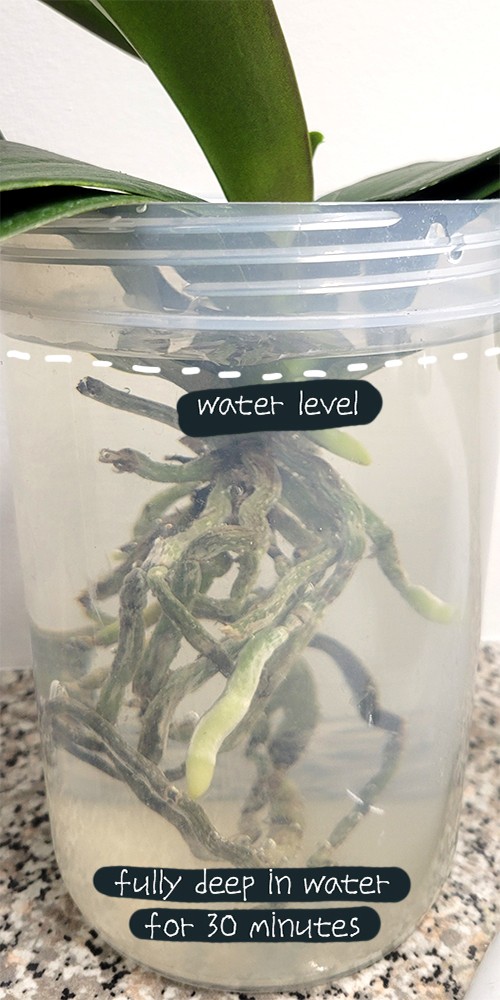
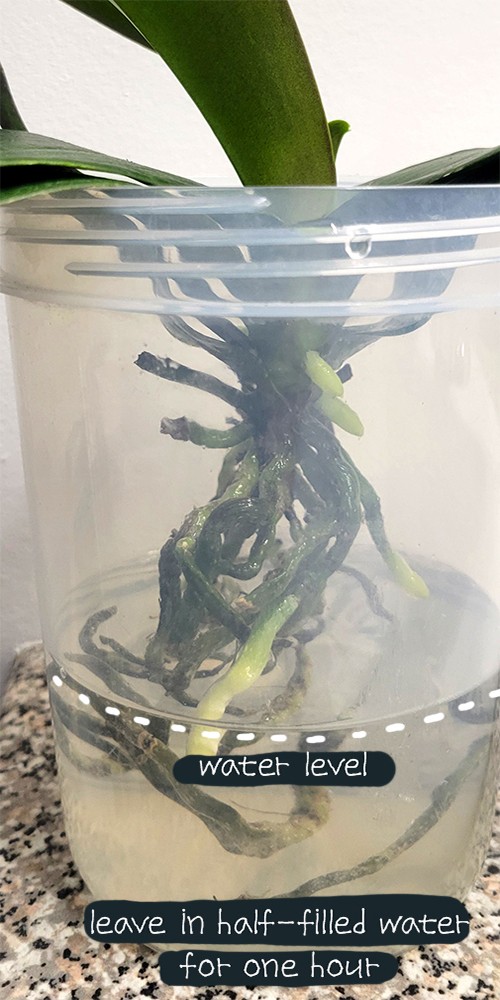
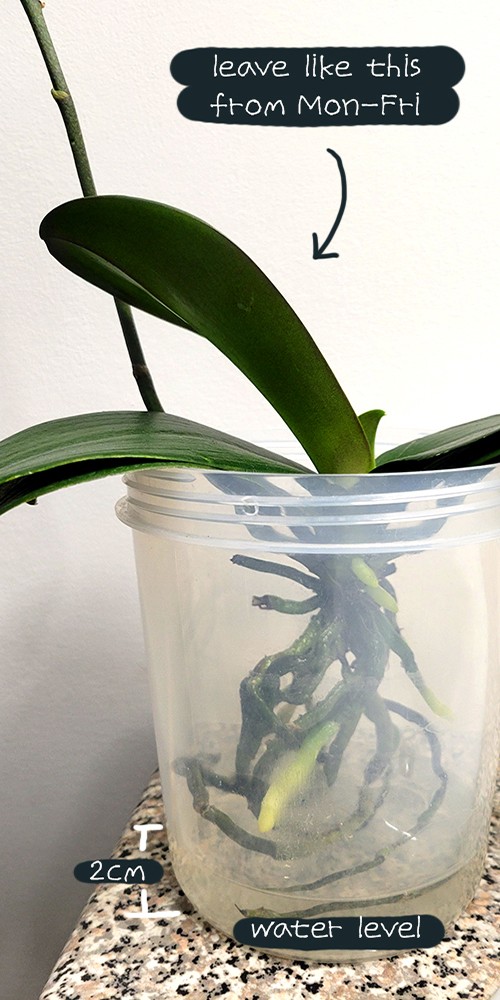
🗓 Weekly Routine (So Easy to Follow!)
To keep things simple, I started this cycle on a Saturday:
-
Saturday: Empty the container completely. Let the roots air dry until Sunday.
-
Monday: Begin the hydration process again — soak fully for 30 minutes, drain to half roots for an hour, then leave 2 cm of water until Friday.
🌿 One Year Later…
It’s been a full year of following this routine, and I’m amazed at the results. While I haven’t seen flowers yet, the orchid has been growing strong new leaves, and I can see fresh buds sprouting from the main stem. The roots look healthy, and the plant is thriving — all without any soil!
This method has been a game-changer for me, and I’ll definitely update with another post once it finally blooms. I never thought growing orchids in water could be so rewarding!
